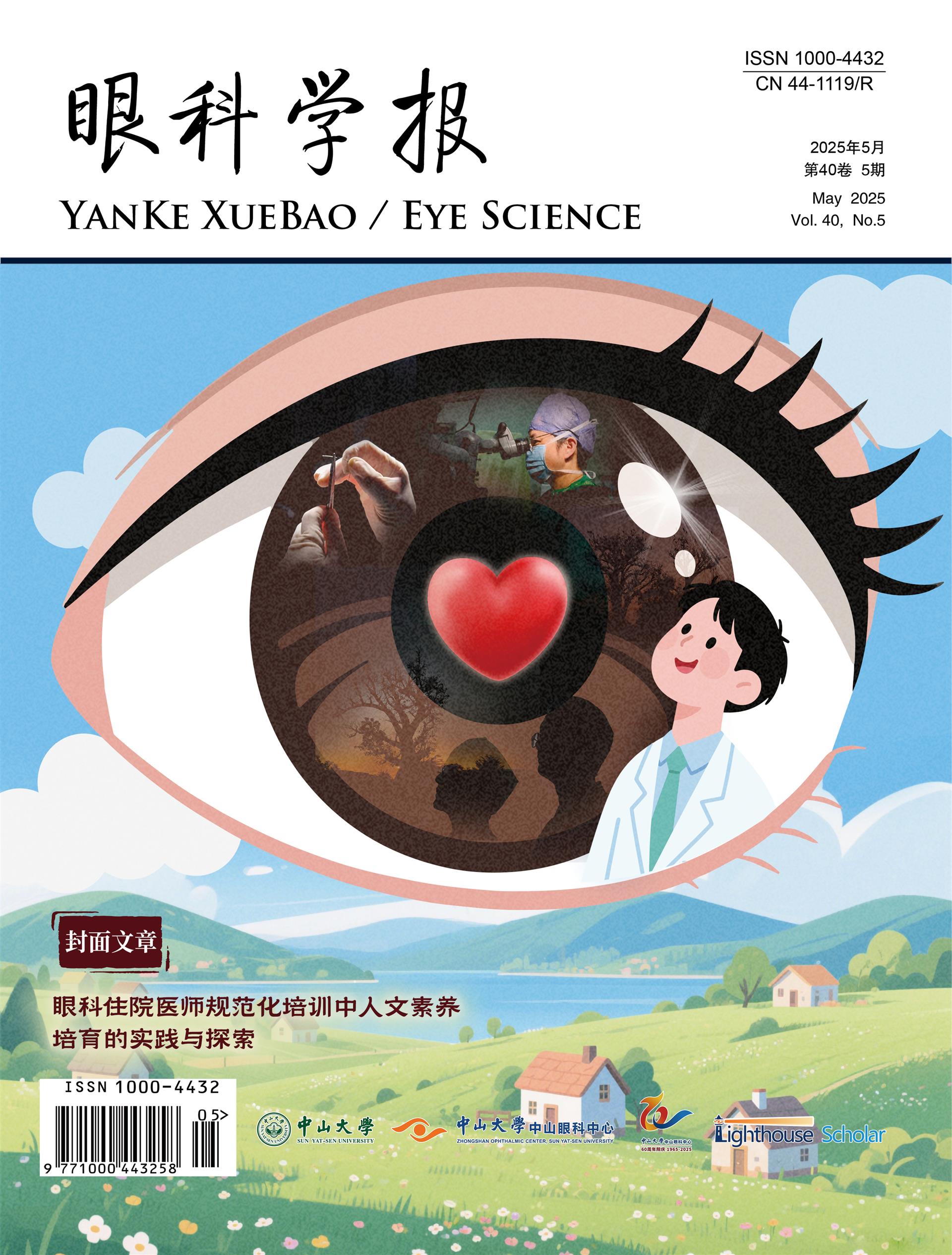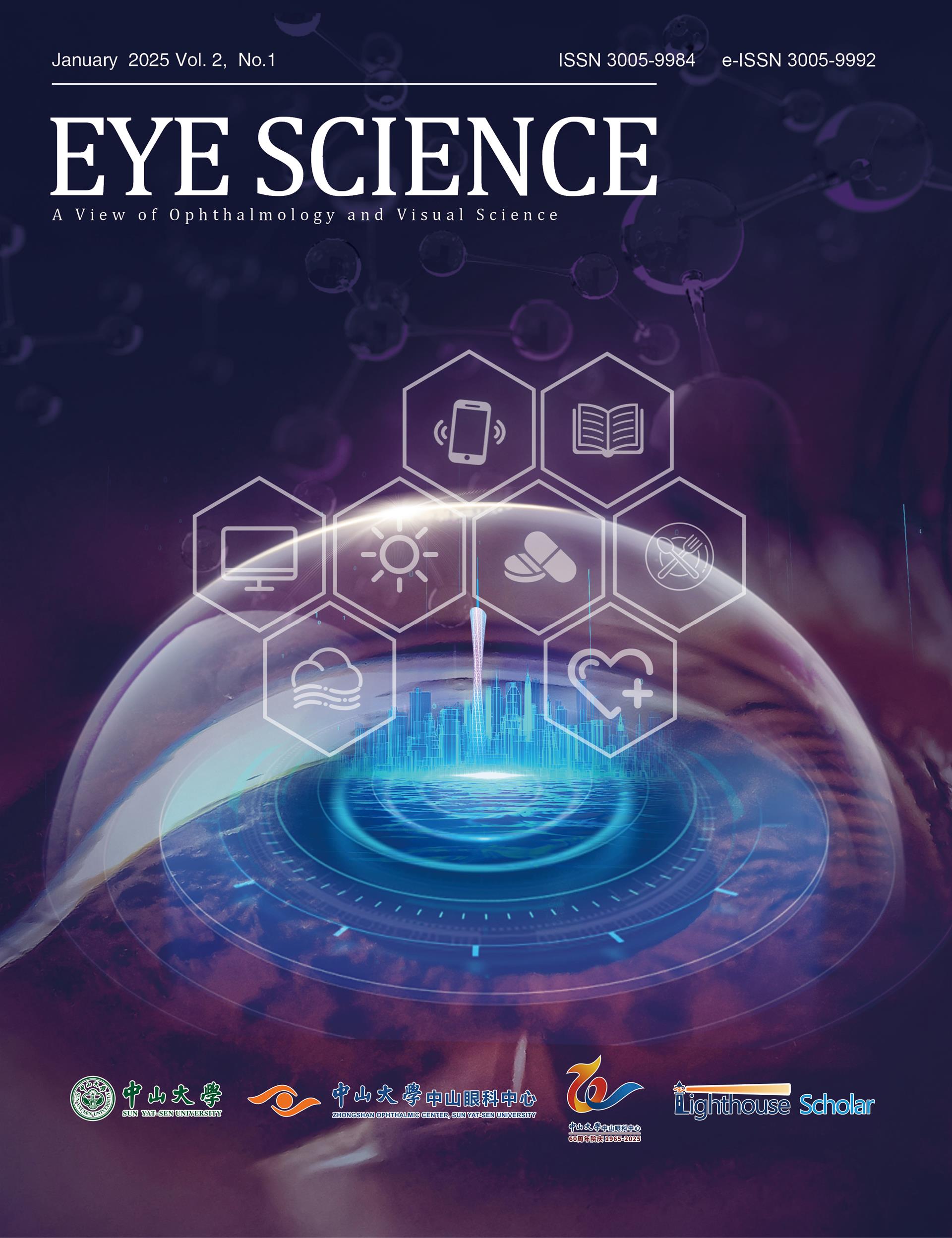1、Dolgin E. The myopia boom. Nature. 2015, 519(7543):
276-278. DOI: 10.1038/519276a.Dolgin E. The myopia boom. Nature. 2015, 519(7543):
276-278. DOI: 10.1038/519276a.
2、Morgan%20I%2C%20Rose%20K.%20How%20genetic%20is%20school%20myopia%3F%20%0AProg%20Retin%20Eye%20Res.%202005%2C%2024(1)%3A%201-38.%20DOI%3A%2010.1016%2F%0Aj.preteyeres.2004.06.004.Morgan%20I%2C%20Rose%20K.%20How%20genetic%20is%20school%20myopia%3F%20%0AProg%20Retin%20Eye%20Res.%202005%2C%2024(1)%3A%201-38.%20DOI%3A%2010.1016%2F%0Aj.preteyeres.2004.06.004.
3、Morgan%20IG%20%2C%20He%20M%20%2C%20Rose%20KA%20.%20EPIDEMICOF%20%0APATHOLOGIC%20MYOPIA%3A%20what%20can%20laboratory%20studies%20and%20%0Aepidemiology%20tell%20us%3F%20Retina.%202017%2C%2037(5)%3A%20989-997.%20DOI%3A%20%0AEye%20Science%202025%2C%20Vol.2%2C%20No.2%20journal.gzzoc.%20com%206%0A10.1097%2Fiae.0000000000001272.Morgan%20IG%20%2C%20He%20M%20%2C%20Rose%20KA%20.%20EPIDEMICOF%20%0APATHOLOGIC%20MYOPIA%3A%20what%20can%20laboratory%20studies%20and%20%0Aepidemiology%20tell%20us%3F%20Retina.%202017%2C%2037(5)%3A%20989-997.%20DOI%3A%20%0AEye%20Science%202025%2C%20Vol.2%2C%20No.2%20journal.gzzoc.%20com%206%0A10.1097%2Fiae.0000000000001272.
4、Morgan IG, Ohno-Matsui K, Saw SM. Myopia. Lancet.
2012, 379(9827): 1739-1748. DOI: 10.1016/s0140-
6736(12)60272-4.Morgan IG, Ohno-Matsui K, Saw SM. Myopia. Lancet.
2012, 379(9827): 1739-1748. DOI: 10.1016/s0140-
6736(12)60272-4.
5、Morgan IG, French AN, Ashby RS, et al. The
epidemics of myopia: aetiology and prevention. Prog
Retin Eye Res. 2018, 62: 134-149. DOI: 10.1016/
j.preteyeres.2017.09.004.Morgan IG, French AN, Ashby RS, et al. The
epidemics of myopia: aetiology and prevention. Prog
Retin Eye Res. 2018, 62: 134-149. DOI: 10.1016/
j.preteyeres.2017.09.004.
6、Holden BA, Fricke TR, Wilson DA, et al. Global
prevalence of myopia and high myopia and temporal
trends from 2000 through 2050. Ophthalmology. 2016,
123(5): 1036-1042. DOI: 10.1016/j.ophtha.2016.01.006.Holden BA, Fricke TR, Wilson DA, et al. Global
prevalence of myopia and high myopia and temporal
trends from 2000 through 2050. Ophthalmology. 2016,
123(5): 1036-1042. DOI: 10.1016/j.ophtha.2016.01.006.
7、Morgan IG, Wu PC, Ostrin LA, et al. IMI risk factors for
myopia. Invest Ophthalmol Vis Sci. 2021, 62(5): 3. DOI:
10.1167/iovs.62.5.3.Morgan IG, Wu PC, Ostrin LA, et al. IMI risk factors for
myopia. Invest Ophthalmol Vis Sci. 2021, 62(5): 3. DOI:
10.1167/iovs.62.5.3.
8、Wang D, Xiong R, Zhang J, et al. Effect of extracurricular
after-school physical activities on academic performance
of schoolchildren: a cluster randomized clinical trial.
JAMA Pediatr. 2023, 177(11): 1141-1148. DOI: 10.1001/
jamapediatrics.2023.3615.Wang D, Xiong R, Zhang J, et al. Effect of extracurricular
after-school physical activities on academic performance
of schoolchildren: a cluster randomized clinical trial.
JAMA Pediatr. 2023, 177(11): 1141-1148. DOI: 10.1001/
jamapediatrics.2023.3615.
9、He M, Xiang F, Zeng Y, et al. Effect of time spent outdoors
at school on the development of myopia among children in
China: a randomized clinical trial. JAMA. 2015, 314(11):
1142-1148. DOI: 10.1001/jama.2015.10803.He M, Xiang F, Zeng Y, et al. Effect of time spent outdoors
at school on the development of myopia among children in
China: a randomized clinical trial. JAMA. 2015, 314(11):
1142-1148. DOI: 10.1001/jama.2015.10803.
10、Jin JX, Hua WJ, Jiang X, et al. Effect of outdoor activity
on myopia onset and progression in school-aged children
in NorthEast China: the Sujiatun Eye Care Study. BMC
Ophthalmol. 2015, 15: 73. DOI: 10.1186/s12886-015-
0052-9.Jin JX, Hua WJ, Jiang X, et al. Effect of outdoor activity
on myopia onset and progression in school-aged children
in NorthEast China: the Sujiatun Eye Care Study. BMC
Ophthalmol. 2015, 15: 73. DOI: 10.1186/s12886-015-
0052-9.
11、Wu PC, Chen CT, Lin KK, et al. Myopia prevention
and outdoor light intensity in a school-based cluster
randomized trial. Ophthalmology. 2018, 125(8): 1239-
1250. DOI: 10.1016/j.ophtha.2017.12.011.Wu PC, Chen CT, Lin KK, et al. Myopia prevention
and outdoor light intensity in a school-based cluster
randomized trial. Ophthalmology. 2018, 125(8): 1239-
1250. DOI: 10.1016/j.ophtha.2017.12.011.
12、Wu PC, Chen CT, Chang LC, et al. Increased time
outdoors is followed by reversal of the long-term trend to
reduced visual acuity in Taiwan primary school students.
Ophthalmology. 2020, 127(11): 1462-1469. DOI: 10.1016/
j.ophtha.2020.01.054.Wu PC, Chen CT, Chang LC, et al. Increased time
outdoors is followed by reversal of the long-term trend to
reduced visual acuity in Taiwan primary school students.
Ophthalmology. 2020, 127(11): 1462-1469. DOI: 10.1016/
j.ophtha.2020.01.054.
13、Zhang JS, Yan XJ, Hu PJ, et al. Analysis on the trend of
prevalence of excellent and good physical fitness and
health status among Chinese Han students aged 13 to 18
years and related influencing factors from 1985 to 2014.
Zhonghua Yu Fang Yi Xue Za Zhi. 2020, 54(9): 981-987.
DOI: 10.3760/cma.j.cn112150-20191121-00877.Zhang JS, Yan XJ, Hu PJ, et al. Analysis on the trend of
prevalence of excellent and good physical fitness and
health status among Chinese Han students aged 13 to 18
years and related influencing factors from 1985 to 2014.
Zhonghua Yu Fang Yi Xue Za Zhi. 2020, 54(9): 981-987.
DOI: 10.3760/cma.j.cn112150-20191121-00877.
14、Neil-Sztramko SE, Caldwell H, Dobbins M. School-based
physical activity programs for promoting physical activity
and fitness in children and adolescents aged 6 to 18.
Cochrane Database Syst Rev. 2021, 9: CD007651. DOI:
10.1002/14651858.cd007651.pub3.Neil-Sztramko SE, Caldwell H, Dobbins M. School-based
physical activity programs for promoting physical activity
and fitness in children and adolescents aged 6 to 18.
Cochrane Database Syst Rev. 2021, 9: CD007651. DOI:
10.1002/14651858.cd007651.pub3.
15、Meli AM, Ali A, Mhd Jalil AM, et al. Effects of physical
activity and micronutrients on cognitive performance
in children aged 6 to 11 years: a systematic review
and meta-analysis of randomized controlled trials.
Medicina (Kaunas). 2021, 58(1): 57. DOI: 10.3390/
medicina58010057.Meli AM, Ali A, Mhd Jalil AM, et al. Effects of physical
activity and micronutrients on cognitive performance
in children aged 6 to 11 years: a systematic review
and meta-analysis of randomized controlled trials.
Medicina (Kaunas). 2021, 58(1): 57. DOI: 10.3390/
medicina58010057.
16、Sallis JF, McKenzie TL, Kolody B, et al. Effects of health�related physical education on academic achievement:
project SPARK. Res Q Exerc Sport. 1999, 70(2): 127-134.
DOI: 10.1080/02701367.1999.10608030.Sallis JF, McKenzie TL, Kolody B, et al. Effects of health�related physical education on academic achievement:
project SPARK. Res Q Exerc Sport. 1999, 70(2): 127-134.
DOI: 10.1080/02701367.1999.10608030.
17、Coe DP, Pivarnik JM, Womack CJ, et al. Effect of physical
education and activity levels on academic achievement in
children. Med Sci Sports Exerc. 2006, 38(8): 1515-1519.
DOI: 10.1249/01.mss.0000227537.13175.1b.Coe DP, Pivarnik JM, Womack CJ, et al. Effect of physical
education and activity levels on academic achievement in
children. Med Sci Sports Exerc. 2006, 38(8): 1515-1519.
DOI: 10.1249/01.mss.0000227537.13175.1b.
18、Donnelly JE, Greene JL, Gibson CA, et al. Physical
activity across the curriculum (PAAC): a randomized
controlled trial to promote physical activity and diminish
overweight and obesity in elementary school children.
Prev Med. 2009, 49(4): 336-341. DOI: 10.1016/
j.ypmed.2009.07.022.Donnelly JE, Greene JL, Gibson CA, et al. Physical
activity across the curriculum (PAAC): a randomized
controlled trial to promote physical activity and diminish
overweight and obesity in elementary school children.
Prev Med. 2009, 49(4): 336-341. DOI: 10.1016/
j.ypmed.2009.07.022.
19、Shephard RJ. Habitual physical activity and academic
performance. Nutr Rev. 1996, 54(4 Pt 2): S32-6. DOI:
10.1111/j.1753-4887.1996.tb03896.x.Shephard RJ. Habitual physical activity and academic
performance. Nutr Rev. 1996, 54(4 Pt 2): S32-6. DOI:
10.1111/j.1753-4887.1996.tb03896.x.
20、Gao Z, Hannan P, Xiang P, et al. Video game–based
exercise, Latino children’s physical health, and academic
achievement. Am J Prev Med. 2013, 44(3): S240-S246.
DOI: 10.1016/j.amepre.2012.11.023.Gao Z, Hannan P, Xiang P, et al. Video game–based
exercise, Latino children’s physical health, and academic
achievement. Am J Prev Med. 2013, 44(3): S240-S246.
DOI: 10.1016/j.amepre.2012.11.023.
21、Xu RB, Gao D, et al. Analysis of the current status of
outdoor activity time of Chinese students in 2016. Chin
J Child Health Care. 2018, 26(3): 254. DOI:10.11852/
zgetbjzz2018-26-03-07.Xu RB, Gao D, et al. Analysis of the current status of
outdoor activity time of Chinese students in 2016. Chin
J Child Health Care. 2018, 26(3): 254. DOI:10.11852/
zgetbjzz2018-26-03-07.
22、Wang ZH, Dong YH, Song Y, et al. Analysis on prevalence
of physical activity time <1 hour and related factors
in students aged 9-22 years in China, 2014. Zhonghua
Liu Xing Bing Xue Za Zhi. 2017, 38(3): 341-345. DOI:
10.3760/cma.j.issn.0254-6450.2017.03.013.Wang ZH, Dong YH, Song Y, et al. Analysis on prevalence
of physical activity time <1 hour and related factors
in students aged 9-22 years in China, 2014. Zhonghua
Liu Xing Bing Xue Za Zhi. 2017, 38(3): 341-345. DOI:
10.3760/cma.j.issn.0254-6450.2017.03.013.
23、Deng L, Zhang YF. Problems and Optimization
Strategies in the Selection of Policy Instruments for
After-school Services inChina——An Econometric
Analysis Based on 27 Provincial Policy Texts. Journal
of Modern Education. 2022, (2): 46-55. DOI:10.3969/
j.issn.2095-6762.2022.02.008.Deng L, Zhang YF. Problems and Optimization
Strategies in the Selection of Policy Instruments for
After-school Services inChina——An Econometric
Analysis Based on 27 Provincial Policy Texts. Journal
of Modern Education. 2022, (2): 46-55. DOI:10.3969/
j.issn.2095-6762.2022.02.008.


























